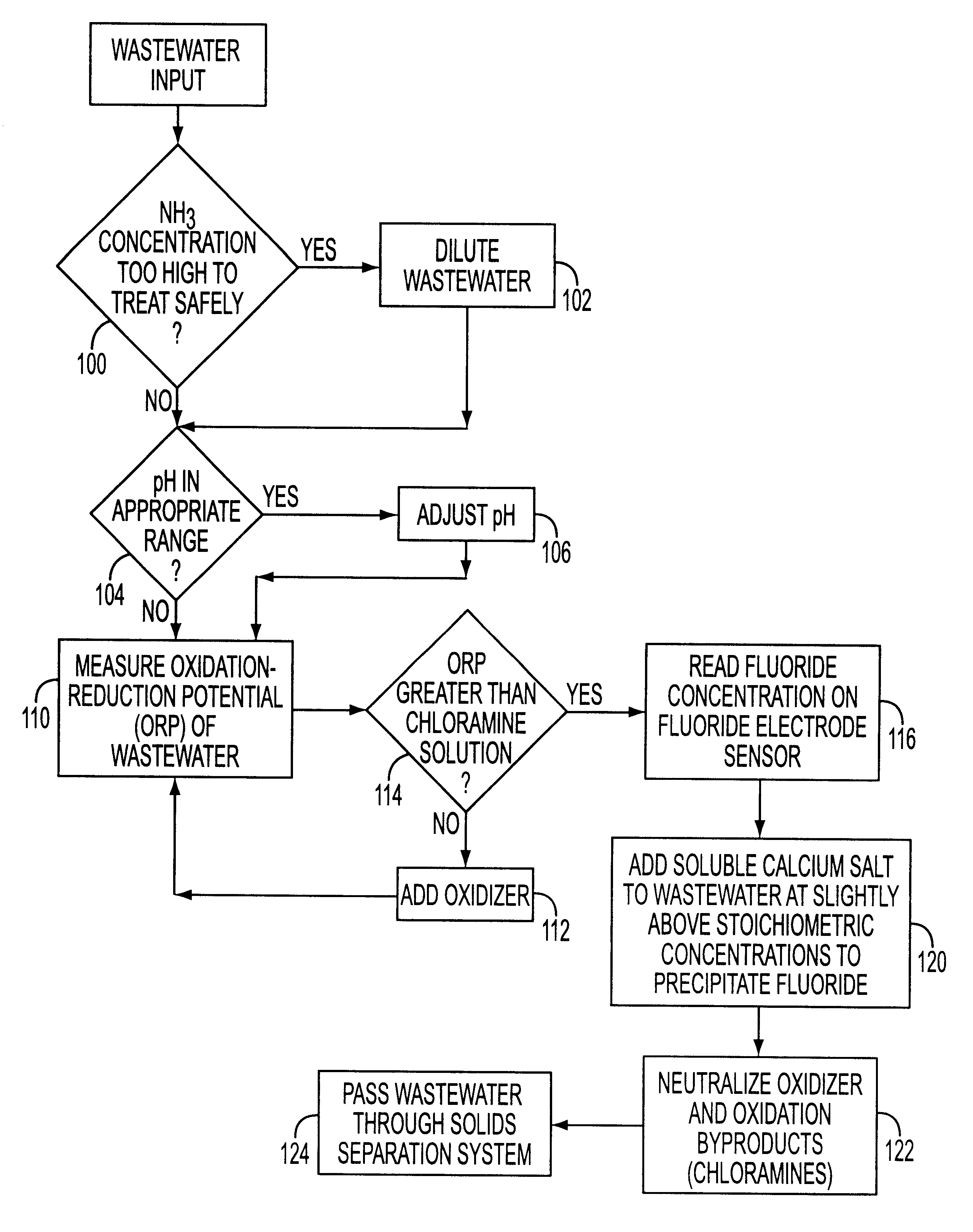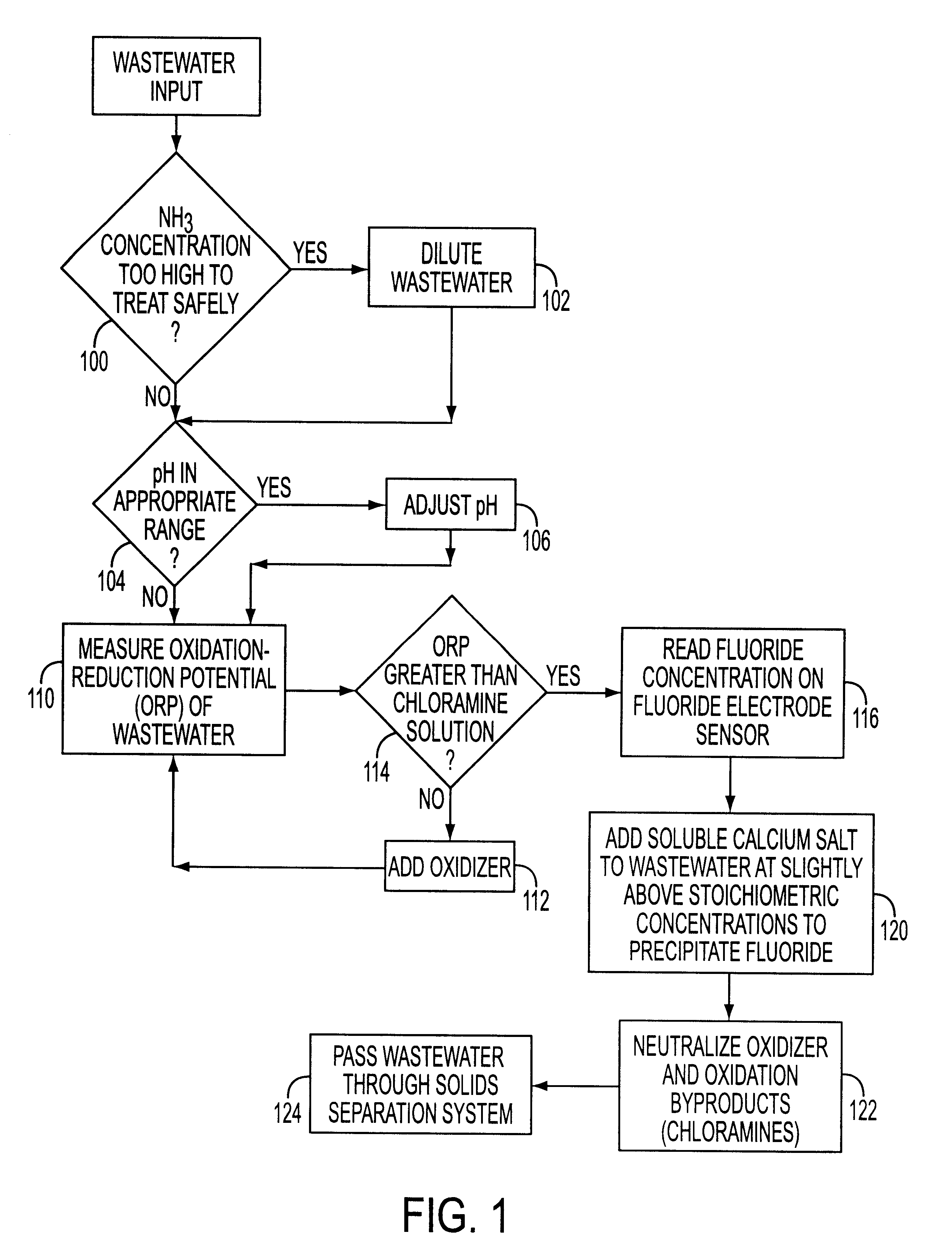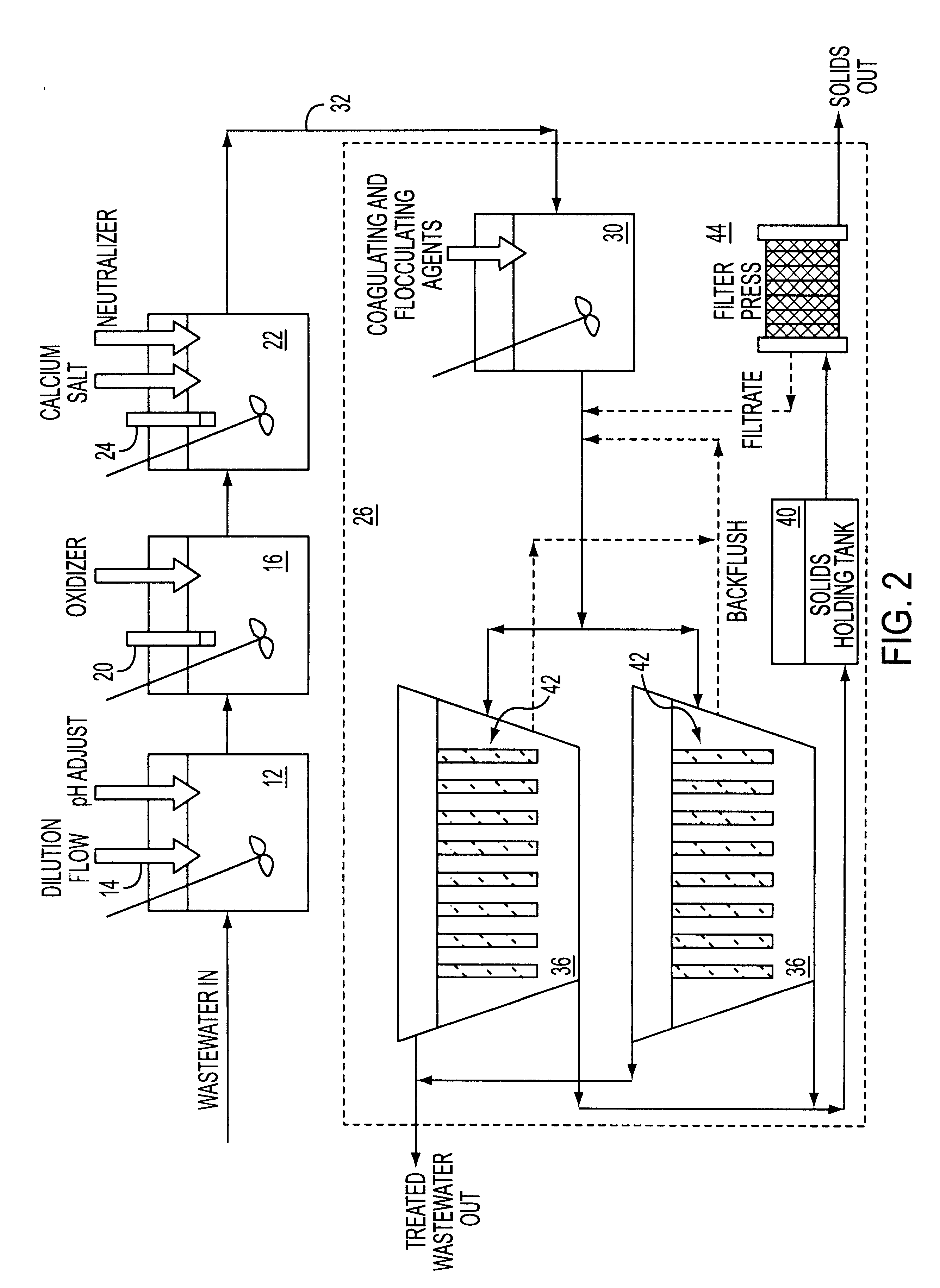Simultaneous ammonia and fluoride treatment for wastewater
a technology of ammonia and fluoride treatment and wastewater, applied in the field of improvement, can solve the problems of ro's sensitive to membrane fouling, ammonia interferes with the precipitation of calcium fluoride, energy consumption, etc., and achieves the effects of reducing the cost of fluoride removal, reducing chemical requirements, and low volum
- Summary
- Abstract
- Description
- Claims
- Application Information
AI Technical Summary
Benefits of technology
Problems solved by technology
Method used
Image
Examples
Embodiment Construction
The following experiments are offered for illustrative purposes only, and are not intended to limit the scope of the present invention in any way. The present invention is carried out using a wastewater stream having a total stream of dilute fluoride rinses and buffered oxide etch (BOE) solutions that amount to about 2000 m.sup.3 / month.
In particular, the BOE solution itself amounts to about 75 m.sup.3 / month, with a ramp up to about 150 m.sup.3 / month. Even though the volume is small, the total amount of fluoride and ammonia is large. The BOE waste stream accounts for about 50% of the total fluoride waste from the plant.
In one example, the ammonium fluoride concentration is in the range of 3-8%. There is 0.2-0.6% (all wt %) triammonium phosphate. The silica concentration is in the low few hundred ppm. No substantial amount of organic matter was present. A 20 m.sup.3 sample was collected and found to have 5.2% fluoride by weight. Incoming pH was also tested and found to be circa 6, ...
PUM
| Property | Measurement | Unit |
|---|---|---|
| retention time | aaaaa | aaaaa |
| pore size | aaaaa | aaaaa |
| pore size | aaaaa | aaaaa |
Abstract
Description
Claims
Application Information
 Login to View More
Login to View More - R&D
- Intellectual Property
- Life Sciences
- Materials
- Tech Scout
- Unparalleled Data Quality
- Higher Quality Content
- 60% Fewer Hallucinations
Browse by: Latest US Patents, China's latest patents, Technical Efficacy Thesaurus, Application Domain, Technology Topic, Popular Technical Reports.
© 2025 PatSnap. All rights reserved.Legal|Privacy policy|Modern Slavery Act Transparency Statement|Sitemap|About US| Contact US: help@patsnap.com



